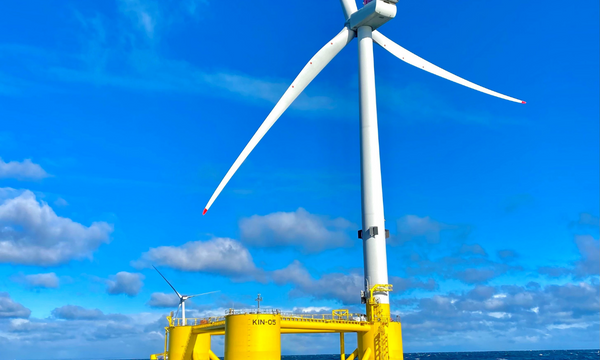The UK’s wind industry is celebrating a decade of substantial growth and progress as it marks the tenth anniversary of Wind Energy Week.
Running until 29 June, Wind Energy Week is an industry initiative showcasing the sector’s achievements across the last ten years, including:
- Doubling the UK’s wind generation capacity, from 13.4GW in 2015 to over 30GW in 2025.
- Providing 30% of the country’s electricity in 2024, a year which also saw wind overtake gas generation for the first time.
- Growing its supply chain to almost 2,000 companies, located across more than 70 parliamentary constituencies throughout the country.
- Increasing its workforce to over 55,000 people.
- Investing more than £550 million in local communities via community benefit funds.
In 2024, wind generated more electricity than gas for the first year ever, providing 30% of the country’s electricity, and this year’s Wind Energy Week arrives at a time of heightened activity across both government and industry. The UK Government’s new industrial strategy identifies clean energy as one of the sectors with the highest growth opportunity for the economy and business, and RenewableUK has now published the results of a mapping exercise of the industry’s supply chain.
Utilising RenewableUK’s EnergyPulse market dataset, the map highlights the locations of the industry’s 1,996 supply chain companies, with a significant presence in over 70 parliamentary constituencies, and categorises them according to a diverse range of activities, from environmental surveying and site design, to blade and cable manufacturing. Alongside this, the map outlines the parts of England, Scotland, Wales and Northern Ireland servicing the UK’s world-leading offshore wind sector, where seven coastal regions known as industrial ‘clusters’ have developed through a concentration of companies involved in the industry, and where there is an expectation that other firms will join them as the supply chain continues to grow.
The map also charts the growth of the wind industry’s workforce, following publication of a new report from RenewableUK and the Offshore Wind Industry Council which shows that the number of people working in the sector now stands at over 55,000. Published last week, the Wind Industry Skills Intelligence Report 2025 reveals that the number of people working in the offshore wind industry has grown to just under 40,000, having risen by 24% from around 32,000 two years ago, while there are a little over 15,000 working in onshore wind. In line with Government targets to reach clean power within the next five years, the report’s projections show that between 74,000 and 95,000 people will be needed to support the accelerated deployment of offshore wind by the end of the decade, while the number of jobs in onshore wind will rise to over 19,000.
In addition, Wind Energy Week will see a focus on how wind energy supports nature and local communities throughout the country, through a range of initiatives such as community benefit funds (CBFs) for communities closest to onshore wind farms, local electricity discount schemes, and local or shared ownership models. Taking community benefits alone, RenewableUK estimates that more than £550 million has been invested through CBFs since 2015, and this figure is expected to rise to £150 million annually if Government ambitions to 2030 are met.
Commenting on the anniversary, RenewableUK’s Executive Director for Policy and Engagement Ana Musat said:
“Wind Energy Week is a great occasion to celebrate the growth, and impact of our sector, as we reflect on a number of recent publications that showcase the growth and geographical spread of the supply chain, the substantial job creation this has entailed, as well as the diverse range of support for nature and communities across the country that our sector provides.
“This week is a unique opportunity to celebrate how far we’ve come in the last ten years, breaking barriers many said were impossible in such a short space of time. But there is a lot more to do, as we look to ensuring we deliver on the Government’s ambitions to 2030 and welcome the arrival of its Industrial Strategy and imminent publication of its Onshore Wind Strategy and Low Carbon Flexibility Roadmap.”

